Are you tired of staring at your plain, uninviting backyard, longing for a cozy outdoor oasis? Well, you’re in luck! Designing a beautiful and functional backyard patio is easier than you might think. As a New York-based lifestyle writer and urban trends analyst, I’ve seen firsthand how a well-designed patio can transform a ho-hum outdoor space into a true extension of your living area.
In this step-by-step guide, I’ll explain how to create a patio that looks great and enhances your overall outdoor living experience. Whether you’re a seasoned homeowner or a first-time renovator, you’ll find practical tips and inspiring ideas to help you design the patio of your dreams.
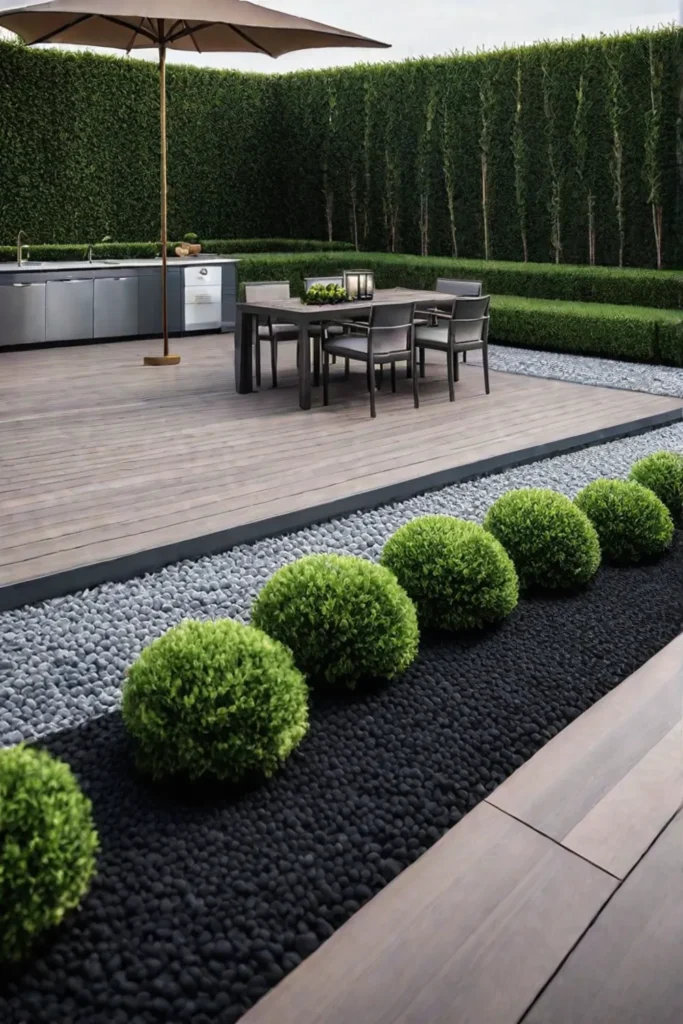
Assessing Your Backyard Space
The first step in designing your patio is to examine your backyard closely. Measure the available space accurately and consider the shape and layout of your yard. This will help you determine the optimal size and location for your patio.
When evaluating your backyard, think about the flow of foot traffic. You’ll want to place your patio in a spot that’s easily accessible from your home and doesn’t obstruct other areas of your outdoor space. Also, take note of any existing structures or landscaping features you’ll need to work around.
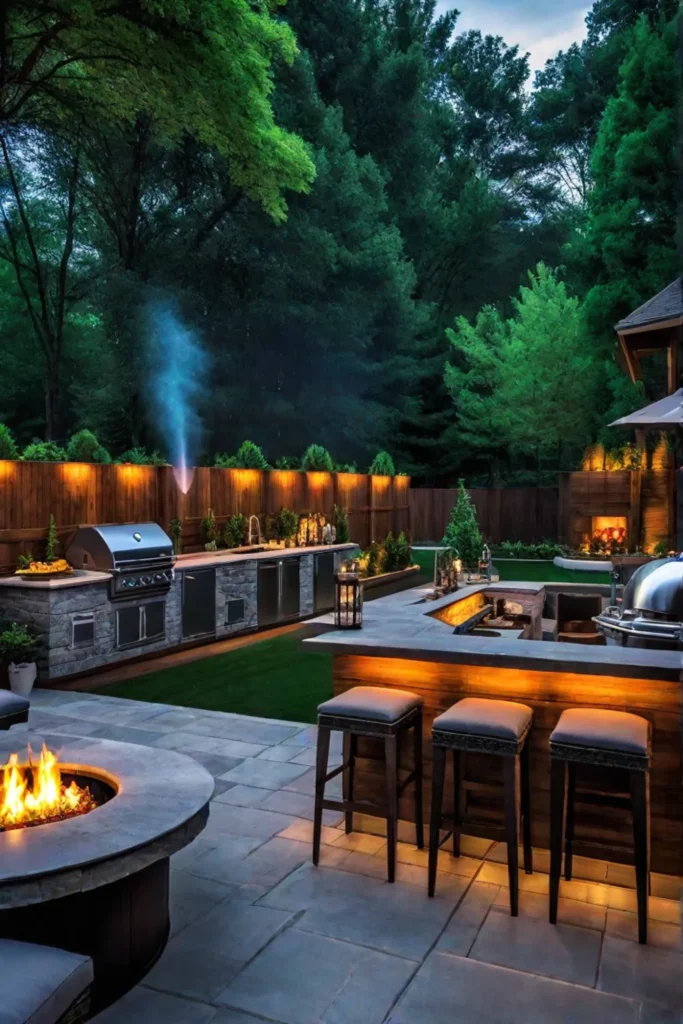
Did you know that the average size of a backyard patio in the United States is between 200 and 400 square feet? Did you know that a well-designed patio can increase your home’s resale value by up to 12%? By carefully assessing your backyard, you can create a patio that fits seamlessly into your overall landscape.
Choosing the Right Patio Materials
Now that you’ve evaluated your backyard, it’s time to consider the materials you’ll use for your patio. This is a crucial decision, as the right materials can make all the difference in your outdoor living space’s durability, maintenance, and overall aesthetic.
Concrete patios are the most popular choice, accounting for over 50% of all patio installations. They’re durable, easy to clean, and relatively inexpensive. However, they can crack over time and may require sealing to prevent staining.
Another popular option is pavers, which come in various materials, including concrete, brick, and natural stone. Pavers are also durable and low-maintenance but can be more expensive than concrete. Interestingly, permeable pavers can even help reduce stormwater runoff and improve drainage.
If you’re looking for a more natural, elegant look, natural stone patios, such as slate, flagstone, or sandstone, are a great choice. These materials are durable and low-maintenance but can be more costly than other options.
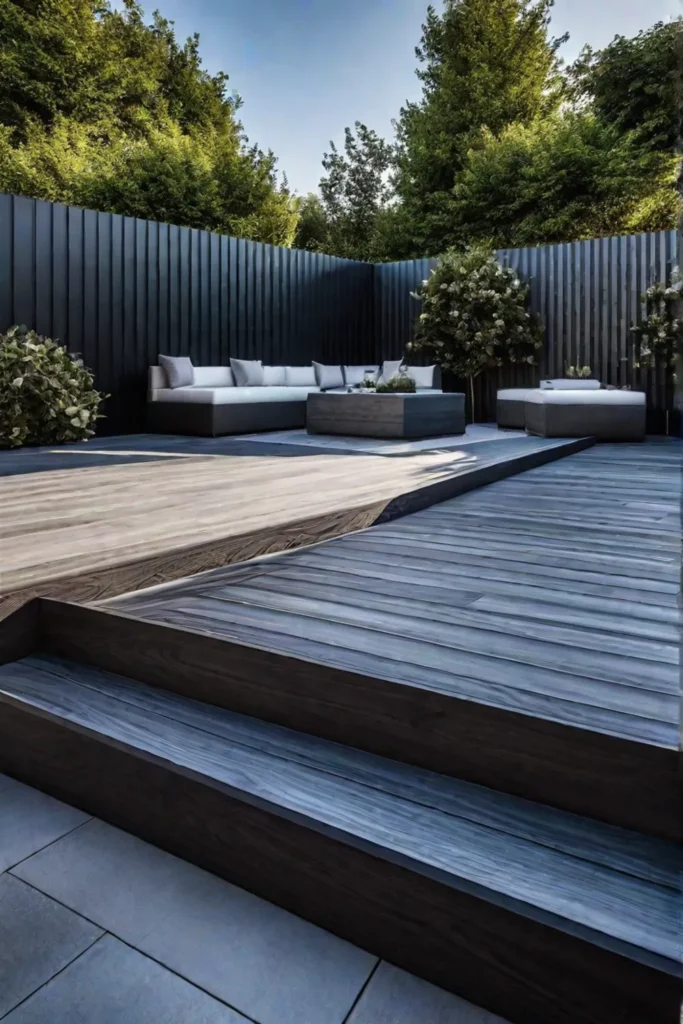
Wooden patios offer a warm, inviting aesthetic but require more maintenance than other materials and may not be as durable in the long run.
When selecting your patio materials, balance functionality and aesthetic appeal. Consider factors like the climate in your area, the intended use of your patio, and your overall budget. With the right materials, you can create a beautiful and practical patio.
Designing the Patio Layout
The layout of your patio is crucial for creating a functional and visually appealing outdoor living space. Start by determining the ideal size and shape based on your available space and intended use. For example, a rectangular or square patio may be better suited for entertaining, while a more intimate, circular design could be perfect for relaxation.
Incorporating seating areas and dining spaces is essential. You might opt for built-in benches or a sectional sofa for a cozy, cohesive look or a portable dining set for more flexibility. Don’t forget to consider additional features like a fire pit or outdoor kitchen, which can increase the value of your home by up to 30%.
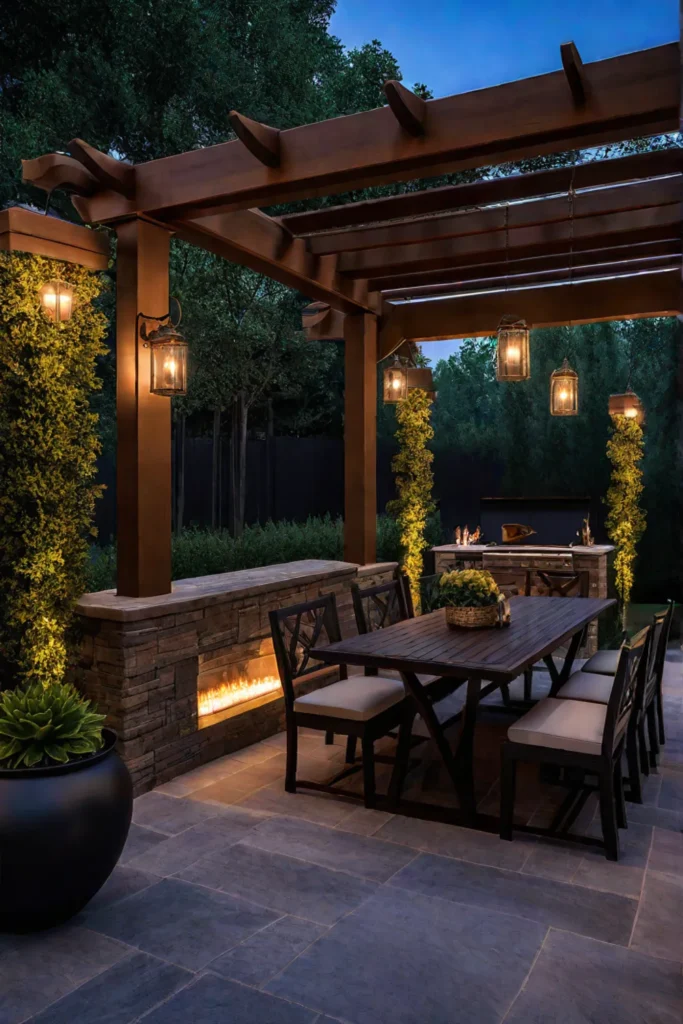
Consider how you want to use the space when designing your patio layout. Will it be a hub for entertaining friends and family or a peaceful oasis for you to unwind? By considering the intended use, you can create a layout that perfectly suits your needs.
Incorporating Landscaping and Decor
Enhancing your patio with thoughtful landscaping and decor elements can elevate the overall design. Start by selecting plants that complement the style of your patio and thrive in your local climate. Incorporate shade structures like pergolas or umbrellas to create a more comfortable and inviting outdoor living space.
Don’t forget about outdoor furniture and decorative touches. Choose comfortable and durable seating options, such as outdoor sofas and chairs, and consider adding a dining table and chairs for alfresco meals. Personalize your patio with artwork, pillows, blankets, and even repurposed planters to make it feel like a true extension of your home.
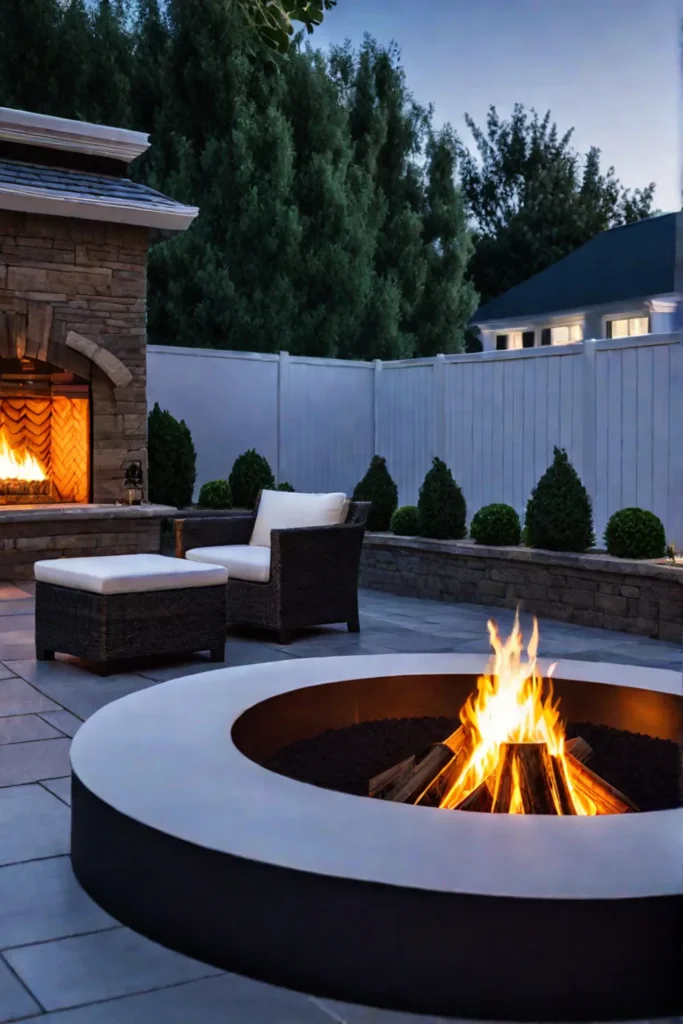
Lighting is another important element to consider. String lights, path lighting, and overhead fixtures can transform your patio into a cozy and inviting oasis, even after the sun goes down. Outdoor lighting can also increase the value of your home by up to 20%.
By carefully selecting and integrating landscaping and decor elements, you can create a functional and visually stunning patio.
Maintaining Your Patio
Proper maintenance is key to preserving the beauty and longevity of your backyard patio. Regular cleaning and sealing of the patio materials can make a significant difference. Use a broom or leaf blower to remove dirt and debris from concrete patios, and apply a sealant every 2-3 years to protect against stains and damage.
Paver patios require more attention, but the results are worth it. To keep them looking their best, sweep away debris and use a pressure washer with a mild detergent. Seal the pavers every 2-3 years to maintain color and prevent staining.
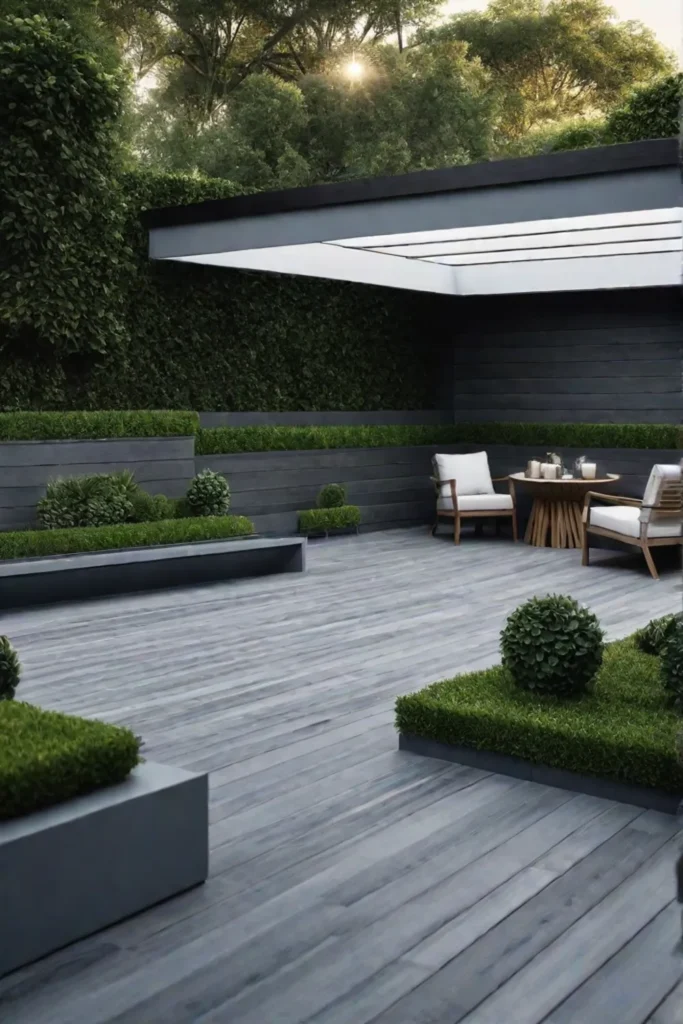
Wooden decks also need some extra TLC. Sweep away debris and use a deck cleaner to remove dirt and stains. To protect the deck from weather damage, refinish it every 1-2 years.
By incorporating regular maintenance into your routine, you can ensure that your patio looks and functions at its best for years.
Navigating Permits and Regulations
Before you start your patio project, it’s crucial to research and obtain the necessary permits in your area. Failure to do so can result in fines or needing to remove your patio. Zoning regulations may also impact the size, location, and materials you can use, so be sure to familiarize yourself with the local requirements.
Working with a construction professional familiar with the permit and regulatory process can be extremely helpful. They can guide you through the necessary steps and ensure your patio design meets all applicable safety and structural standards.

Adhering to local regulations can not only prevent legal issues but also increase the resale value of your home by up to 10%. So, take the time to understand and comply with the rules and regulations in your area.
Conclusion
Designing a backyard patio is an exciting project that can transform your outdoor living space and add value to your home. By following this step-by-step guide, you’ll be well on your way to creating a beautiful and functional patio.
Remember to start by carefully assessing your backyard, choosing the right patio materials, designing a layout that suits your needs, and incorporating thoughtful landscaping and decor elements. Don’t forget to maintain your patio and navigate the permit and regulatory process to ensure a successful and stress-free project.

With a little planning and attention to detail, you can create a backyard patio that becomes your new favorite spot to relax, entertain, and enjoy the great outdoors. So, what are you waiting for? Get started on your patio design today!










